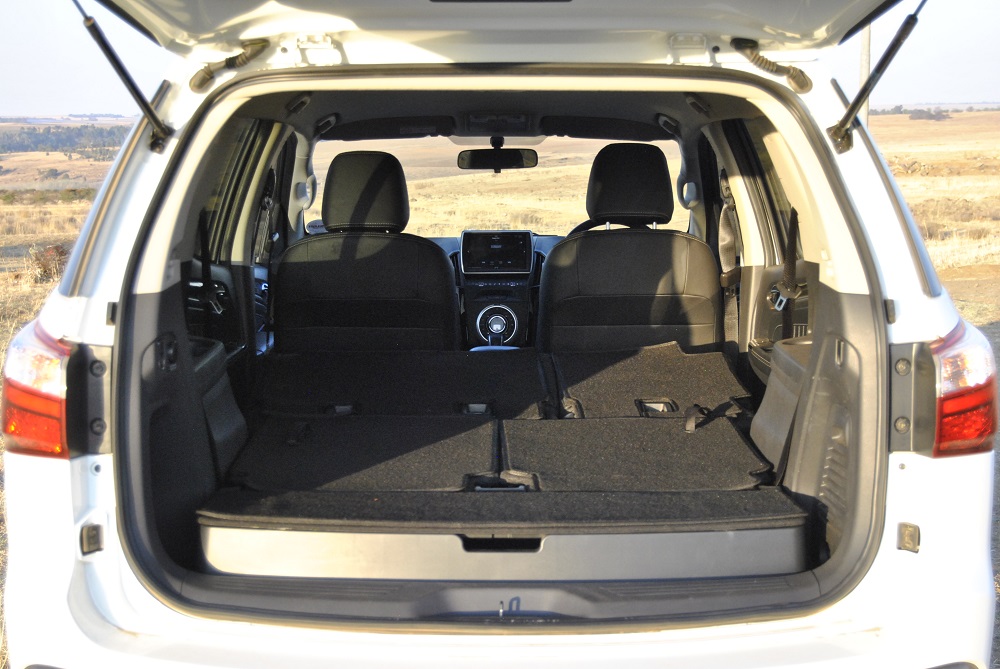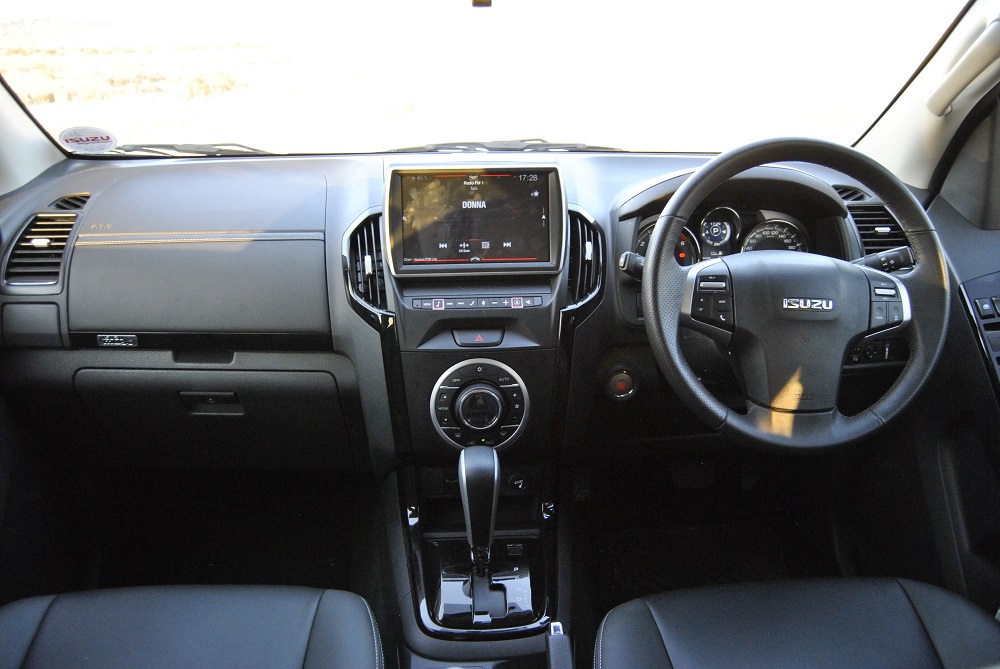Whereas its rivals invoke a sense of unease when going off-road despite their capability, the MU-X feels off-the-tar ready from the get-go.

Facelift Isuzu MU-X
The cliché of how popular SUVs have become over the last few years is admittedly an old and overused one, but still noteworthy as more and more manufacturers join the party.
Of the established brands with a proven track record though, the lacklustre performance of the Isuzu MU-X remains something of a mystery, especially in the popular body-on-frame or bakkie-based segment. The twin of the erstwhile Chevrolet TrailBlazer, the D-Max underpinned MU-X, which many observers felt should have been marketed in South Africa instead of the bowtie in the first place, has been something of a disappointment since coming to market two years ago following General Motors’ exit in 2017.
Whereas Toyota shifted 11 644 Fortuners last year and Ford a total of 3 544 Everests, only 716 MU-X’s found new homes, a figures that places it a distant third and in stark contrast to Australia where over a 1 000 units are moved every month, which sees it often competing with the Toyota Land Cruiser Prado for the title of the best-selling ladder-frame SUV Down Under.
Globally already seven years old with an all-new model reportedly coming in 2022, the MU-X has now undergone its second mid-life refresh, the first coinciding with its local market debut, and on the back of inter-provincial travel restrictions being lifted, headed towards the heart of central South Africa for a much needed, for its minder, jaunt out of the Big Smoke.
Visually, the MU-X’s relations to the D-Max is clear in the form of a pointy nose, a new dual port chrome grille and newly designed projector-type bi-LED automatic headlights. Appearing more compact than the TrailBlazer somehow, the remainder of the revisions include a new front bumper with a blacked-out lower half instead of the previously used chrome, gloss black side steps, silver roof rails, new fog light surrounds and 18-inch diamond cut gloss alloy wheels seemingly taken from the D-Max X-Rider. A colour coded upper rear bumper and a black-and chrome taillight finish rounds the exterior off.
Despite the subdued Splash White paint finish, the MU-X appears unashamedly rugged and even imposing with the angry rear facia and expansive glasshouse with its neat roof integrated spoiler contributing to an edgier look compared to the Ford and Toyota.
Unlike its rivals, the interior is a reminder of a bygone age in spite of effort to make it feel premium. Like the D-Max, hard, shiny and cheap feeling plastics adorn the facia with the smattering of new piano-key black detailing doing little to lift the cabin’s appearance. The same applies to the leather draped over the flimsy split glovebox and the optional Alpine nine-inch touchscreen infotainment system which, despite the shortcut buttons, doesn’t rate as the most effective or user friendly in the segment.
Aside from retaining the rotary climate control dial used in the TrailBlazer, the rest of the MU-X’s cabin won’t give the Fortuner or Everest sleepless nights as its more about simplicity than aspiring to be premium. That being said, it does get the instrument cluster from the D-Max, white ambient lighting, satellite navigation, electric height adjustable driver’s seat, an eight-speaker sound system, reverse camera, keyless entry, cruise control, push-button start, Trailer Sway Control, Hill Start Assist and Hill Descent control to name but a few features.
Seating is once again provided for seven with the second row being easy to tilt forward in aiding entry to the third row, which, in typical segment fashion, is largely reserved for children and small adults. Included though is a separate climate control panel with roof-mounted vents as well as a storage box integrated into the boot that swallows-up smaller items with all seven seats in use.
The key to the MU-X’s utilitarian roots though is most prominent on the move. Like the D-Max, motivation comes from the N-series truck derived 3.0 D-TEQ turbodiesel that pumps-out 130kW/380Nm. Hooked to a somewhat indecisive six-speed automatic gearbox, the tried-and-tested oil burner, which never received the 50 Nm torque hike as the Aussie version, does a good job of hauling the 2 085 kg MU-X along, albeit with the familiar agricultural Isuzu soundtrack and a fair amount of diesel noise at the national limit.
In addition, the ride, previously a D-Max standout, lags well behind that of the Fortuner and Everest in being choppy and prone to ‘hit through’. It did however make light work of the badly potholed R57 between Sasolburg and Heilborn on its trek, but soon after developed an annoying rattle within the centre console that lasted until the end of its tenure. What’s more, its truck lineage extends to the steering that is both heavy and devoid of any feeling.
However, when tasked with going off-road, the big Isuzu came into its element as it traversed the rocky terrain thrown at its with absolute ease. With low range on the rotary dial selected, it crawled over obstacles without breaking a sweat and thanks to the 230 mm of ground clearance and inclusion of an Eaton locking rear differential, conquering the rough stuff won’t present much of a problem. All the while, it proved surprisingly frugal with the spells in town, on the open road and off-roading netting a best indicated consumption of 8.8 L/100 km.
For all its shortcomings, an area the Isuzu MU-X doesn’t hold is knowing what it is; a rough-and-tough old-school SUV with just the correct amount of luxurious and space for seven that puts it more in-line with the five-seat Frontier than the upper market aspirations desired by the iconic Trooper.
However, despite being considerably cheaper than the Everest and Fortuner at R712 200, it is simply too old-tech and niche focused without a lot of modern mod-cons needed to be considered as a serious, “suited-for-everyday life” SUV its rival have become.
For more news your way, download The Citizen’s app for iOS and Android.














